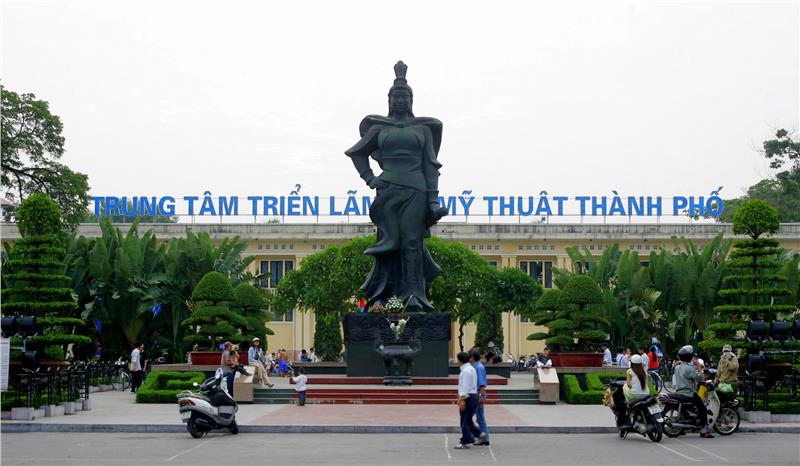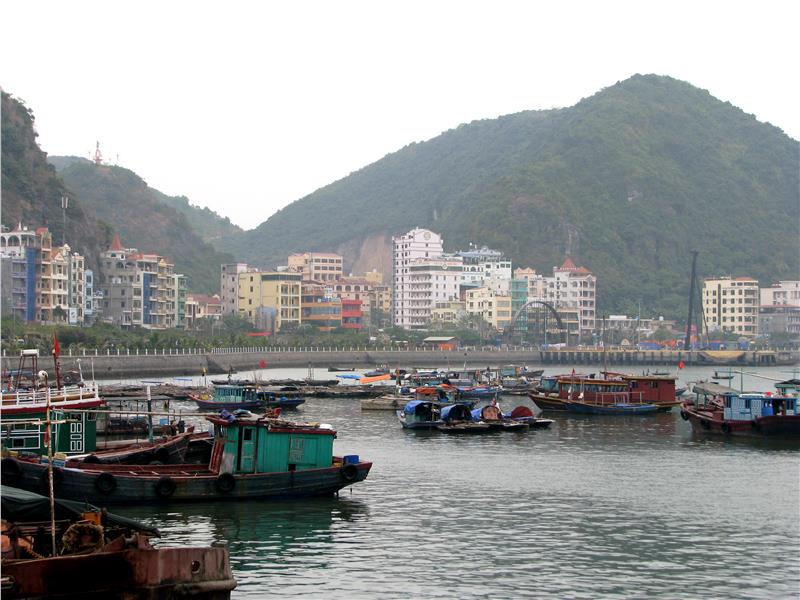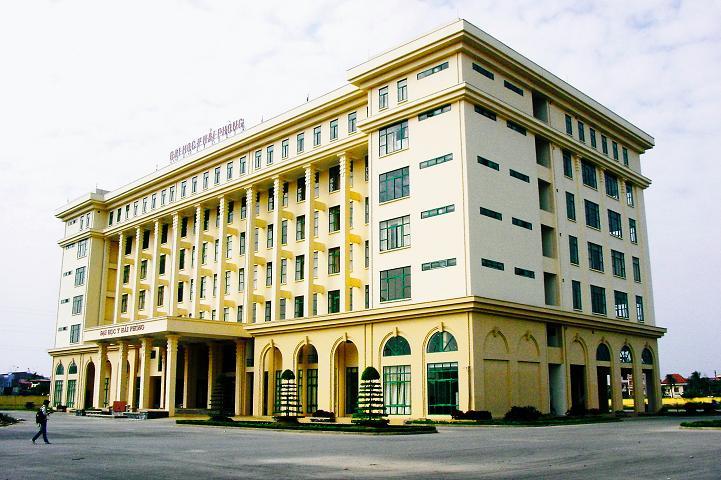Haiphong is dubbed as the red flamboyant city, has the biggest seaport in the North Vietnam. In addition, Haiphong is the traffic hub of the northern waterway. With the advantages of the deep water sea port, the sea transport of the city very develops. This is also one of the motivate powers for the growth of the Northern key economic zone.

Geographical location: The northern terrain in Haiphong is the midland, hills interspersed with the plain. The city’s river system is quite dense; the average density is from 0.6 to 0.8 km/km2. The slope is small, mainly flowing toward the Northeast - Southeast. Haiphong coast is 125 km long, fairly low and flat, slightly.
Climate: Haiphong has sub-tropical climate, typical weather of the North Vietnam. The city has 4 distinct seasons: spring, summer, fall and winter. The summer is hot and wet; the winter is cold and dry. The average temperature in the summer is about 32,5 °C, and the winter is about 20,3 °C. The average temperature is 23.9%/ year. The average rainfall is 1600-1800mm/year.

In the Le dynasty, Haiphong located in Hai Duong town (one of 4 towns of Thang Long). When the French colonists beat the first battle in the North during 1873 -1874, the Nguyen Dynasty had to sign the “Giap Tuat” Treatment. In this treatment, the Nguyen dynasty had to open for business in Ninh Hai port (Haiphong) and Thi Nai port (Binh Dinh) in exchange for the French withdrawal from the North. After that, in Ninh Hai port, Nguyen dynasty and the French colonists established a general tax agency managing the trade in this port known as Hai Duong trade providence. Since then, the name Haiphong official mentioned in term of geography.
In 1887, the French colonists split some coastal districts located adjacent to Ninh Hai port of to establish Haiphong province. On July 19th, 1888, French President Sadi Carnot signed the decree to establish Haiphong city - Haiphong city official named on the Indochina map.
Under the French colonial period, the late 19th century and the early 20th century, Haiphong was one of the centers of revolutionary in the whole country. As the largest seaport of Tonkin, an important traffic hub on the international maritime road and industrial center, Haiphong became one of the cradles marking the birth of the working class and struggle movement of Vietnam workers against oppression and exploitation of the French colonists.
During the period 1955-1975, with the role as the biggest port in the country, Haiphong received the majority of international aid and the originative base of Ho Chi Minh trail on the sea. After the unification (1975), Haiphong is one of three central cities of Socialist Republic of Vietnam (along with Hanoi and Ho Chi Minh City).

Haiphong is one of three cities under the central government of Vietnam immediately after 1975 along with Ho Chi Minh and Hanoi. People’s Committee headquarter is located at 18 Hoang Dieu Street. Haiphong city includes 7 districts, 6 suburban districts and two islands (228 communal units, 70 districts, 10 towns and 148 communes).
According to the statistics in 2011, the population in Haiphong is 1.907.705 people, including 46.1% of the urban residents and 53.9% of rural residents. Kinh people cover most of city’s population, so Vietnamese is the official language of Haiphong.

Haiphong city is an important economic center of the North in particular and of Vietnam in general. Under the French colonial rule, Haiphong ranked equally to Saigon, Hanoi. The late 19th century, the French had proposal of the construction Haiphong to become the “economic capital of Indochina”.
Today, Haiphong is one of the most important economic centers of Vietnam. Since 2005, Haiphong always ranks in the top 5 cities contributing to the most state budget in the country after Ho Chi Minh City, Ba Ria – Vung Tau and Hanoi. In 2009, the city’s state budget revenue reached 34.000 billion. In 2011, the revenue of the city reached 47.725 billion, increasing 19% over 2010. In the provincial competitiveness index in 2013, Haiphong city ranked the 15th among 63 provinces and cities.
Haiphong is the biggest import and export center of the North. Until now, Haiphong has commercial relation with more than 40 countries and territories around the world.

Education – Training: With the advantage of a province under the central government, Haiphong is the big educational center of Vietnam. The schools in Haiphong have good and comprehensive facilities. Currently, there are 5 universities and institutes, 16 colleges, 26 vocational trainings, 56 high schools and hundreds of schools from secondary schools to pre-school.
Health: Haiphong currently has 15 hospitals and army hospitals to meet the demand for health care of people in the city and near city as Quang Ninh, Thai Binh.
In past years, the People’s Council of the city has constantly enhanced and improved its role and responsibility to ensure timely implementation the way and policies of the Party and State and bring the happy life for the local people.

Haiphong is a Vietnam’s tourist center. Being the big city near the sea, Haiphong is an important part in the economic triangle and tourism in Haiphong – Hanoi – Quang Ninh. Haiphong owns many landscapes, tourist areas with high quality and international standard such as four star resorts, casino, Do Son golf course, the ecological resort… The international visitors, especially Asian visitors are interested in Cat Ba Island, a beautiful island with the rich flora and fauna and high qualified hotels and restaurants.
In 2010, Haiphong welcomed 4.2 million visitors, including the international visitors accounted for 596.400 arrivals. In the first of six months in 2011, the number of tourists to Haiphong reached 2516 million arrivals, increasing 29.2 % over the same last year. The total revenue of hotels, restaurants and services achieved VND 5.6 thousand billion, an increase of 29.2% over the same period.
Today, thanks to the attention of the city and investors, Haiphong tourism is more and more developing. Haiphong tours are more and more diverse and attractive. The city’s tourism has been changed strongly to deserve with its position in Vietnam tourism.
Festival

Like many provinces and cities across the country, Haiphong is also home to the festivals imbued with the cultural identity of Vietnam. Do Son – the call of the sea festival is held from April 30 to May 2 every year with many exciting and attractive activities to promote the tourism in Haiphong. Do Son buffalo fighting festival is the most fun day in the festivals in Do Son, because the festival not only brings the martial spirit of the nation but also the symbol of the agriculture of Vietnam. In addition, there are many attractive festivals as Dragon Boat Race Festival in Do Son beach, Cat Ba fishing village festival, Elephant Mountain Festival (An Lao district), Red Flamboyant Festival (this is the new tourism activities of the city, starting from 2012).
